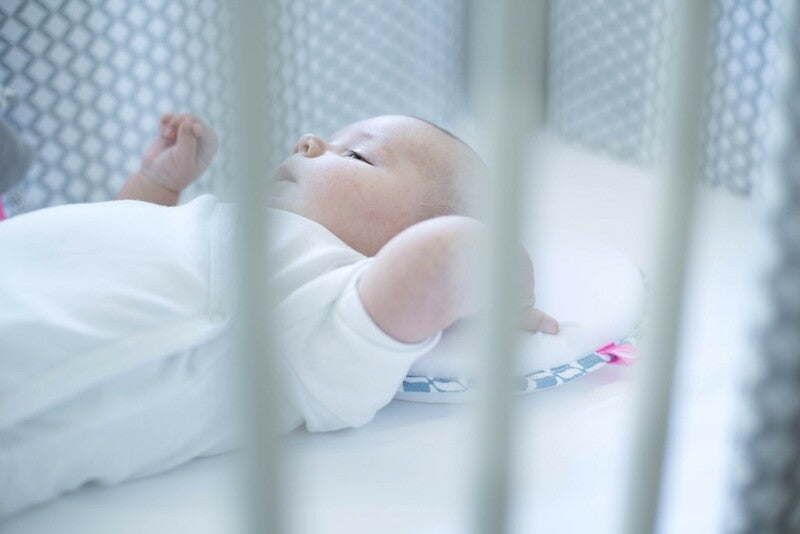The growth of the baby from 0 to 6 months.
Newborn growth stages
Growth milestones are the first milestones that a child reaches during his development. They must be kept in mind without panicking if there are variations with respect to the path and the standard values and are essentially controlled by consistently following three parameters: weight, height, psychomotor development, through the percentage tables, or graphs divided by sex, which indicate the values relating to the weight, height and psychomotor development of children in their first five years of life.
These stages are not random, they follow precise natural mechanisms, almost similar in all human beings. If the growth of a newborn is written in its DNA, there are factors, such as environmental conditions, nutrition and conditions that can influence and modify the correct course of growth.
Weight
Weight is a fundamental factor, it is also capable of marking the state of health of the child, it is the most common and most requested growth parameter, especially by relatives when they see it for the first time. The newborn child is weighed and it is established whether it falls within the conventional parameters of between 2.5 kg and 4.5 kg. In the days following birth, the loss of about one tenth of the total weight is physiological, which the newborn usually regains in next two weeks. The following stages of the weight trend can manifest individual variations, such as, for example, the fact that some children have a tendency to gain weight more easily than others, then reversing the process over the years.
The height
Height , like weight, is an important milestone in a child's growth, however it has wide margins of difference between children. In fact, it may happen that in the first two years the child is shorter than the measures shown on the tables and subsequently develop more rapidly.
Psychomotor development
Psychomotor development is a parameter of great importance: it immediately signals any problems or motor dysfunctions, learning, on the other hand, does not necessarily have to cause concern: a child may have a slower learning than his peers; it is not a problem, it is important that it still shows signs of interest, liveliness and interaction with the environment and people.
The use of parameters is useful to get an idea of the child's development, but they should not be taken with alarmism in case of disparity between the suggested values and the real ones: a consultation with the pediatrician helps to better understand the situation. The first year of a baby's life is an extremely important period, it makes us witness a series of changes in terms of weight, height, psychic and sensorial maturity.
From the first days of birth, the newborn begins to develop cognitive and psychomotor skills, following a growth path made up of stages that lead him, step by step, to a gradual individual maturation. In describing the developmental phases of the child it should be borne in mind that the stages are only indicative: each child, in fact, is unique and has his own personal priorities in the development process.
So there is no need to worry if your child reaches certain goals slightly late or early, while it is important to periodically contact the pediatrician, who will be able to reassure you or guide you in the solution of any problems, because intervening in a targeted and timely manner can easily solve any slight delays.
The newborn at one month
The newborn, lying down, already after about ten days from birth kicks and waves his arms, squeezes the finger that is placed in his hand, when he is picked up he is able to keep his head erect. After the first few days, the baby's growth is more and more rapid and at the end of 30 days it should have a weight of around 4 kg, a height of 50 cm. If supported, it is able to lift its head and sit upright, feeds on mother's milk, notices noises, is able to follow colored moving objects with its eyes. Crying is her way of communicating a need, and she is likely to start responding to cuddles with smiles. During the first month he sleeps about 19 hours a day, he does not distinguish day from night, his sleep is essential because it is precisely at this moment that growth hormone is produced.
The newborn at two months
In the second month, the infant increases its weight again, until it reaches about 5 kg and stretches more or less to 60 cm., Is able to hold a light object in its hands, takes on a quantity of milk equal to about 5 bottles per day. The second month represents the time when the first pains, such as colic, can appear and eczema or atopic dermatitis can occur on the cheeks, legs and / or wrists, usually regressing quickly and spontaneously. The baby begins to sleep less and less than in the first month of life and crying becomes more frequent, especially at the end of the day.
The newborn at three months
During the third month his weight continues to grow steadily at a variable rate of more or less 150 grams per week if he is breastfed or with formula milk: in the first case his growth will be more rapid while the development of height can undergo a slowdown. The baby's psychomotor development now becomes more important: he makes voluntary movements, he is no longer just instinctive, he grasps objects, puts his foot in his mouth, turns his head to both sides, can sit still. These are the first signs of an awareness of one's abilities and that she tests daily through all these small actions.
However, in this trimester the baby's growth may not be constant monthly and instead be more intense in some weeks and less intense in others. More than the general increase in weight, it is important to verify that this follows a fairly regular trend and that it does not stop for too many consecutive weeks. It is therefore not necessary, as many mothers do, to force children to overeat against their will. Growth, at three months, marks important milestones also in terms of the development of motor and cognitive skills: the child makes the first efforts to try to keep his head raised in an upright position, begins to use his hands, smiles at the most familiar faces and becomes more curious about the surrounding environment that he observes more insistently.
The newborn at four months
These first efforts usually come to fruition in the fourth month, when the baby is able to turn his head, play with his hands and emit small laughter. Once in bed in the supine position, he rotates his back to the right and left and tries to spontaneously turn to either side.
The newborn at five months
In the fifth month he begins to show awareness of his own body: he even manages to grasp objects even if at times he cannot leave them voluntarily. Obviously at this stage it is advisable to give him the opportunity to know the objects and play with them manually. Not always in this month he is able to sit steadily so do not force him.
The newborn at six months
At six months, these abilities become more evident even in the prone position. Furthermore, during the sixth month, the pace of growth begins to increase in intensity, preparing for the third trimester of life in which on average the weight increases by about 400 or 500 grams each month. Lallation begins to develop, that is, the meaningless combination of syllables of consonants and vowels such as ba-ba-ba, ta-ta-ta, ga-ga-ga. Towards the end of the sixth month, some babies may be able to tell mom and dad too.Dear mothers, after reading our article we recommend that you visit our Luxury Kids website where you will find everything you need for your child's growth.






Leave a comment